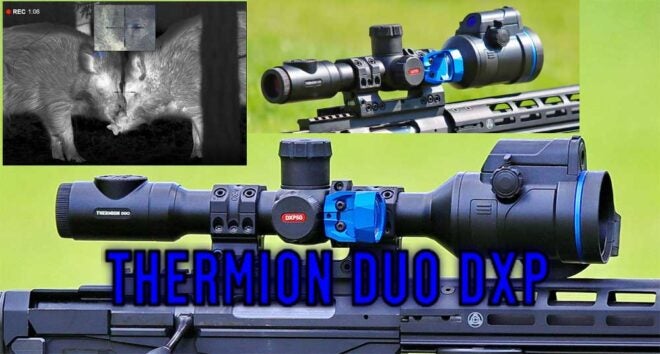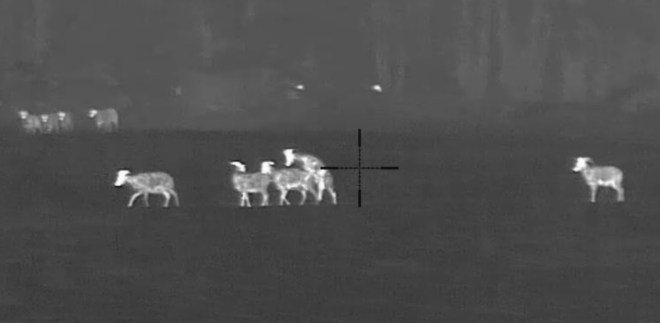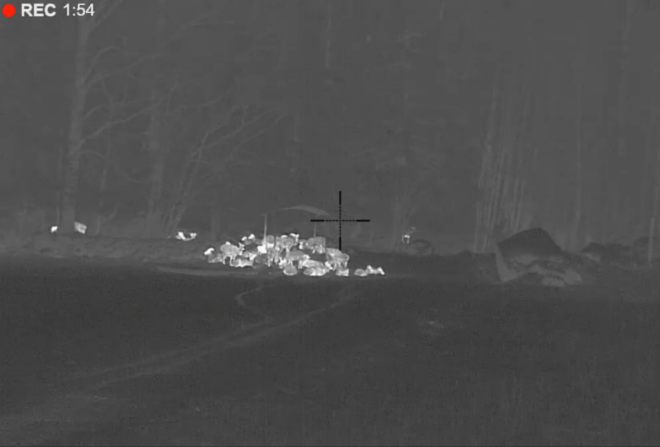This is a review of the Pulsar Thermion DUO DXP50 Multispectral Scope, which is one of the coolest riflescopes I have ever used. You could probably buy the DUO, and never ever have to own anything else. The 4K CMOS day camera replaces your ordinary optical sight and does a good enough job for almost all possible applications. At night, you can switch to the high-end thermal and continue hunting. The solution is packed into a riflescope that mounts with normal 30 mm rings and looks more or less identical to a traditional one.
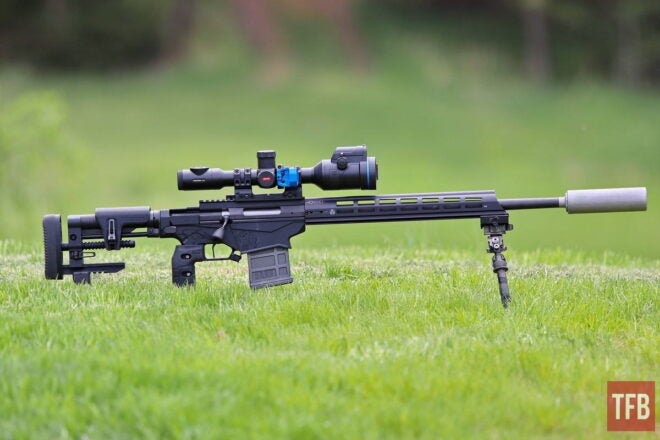
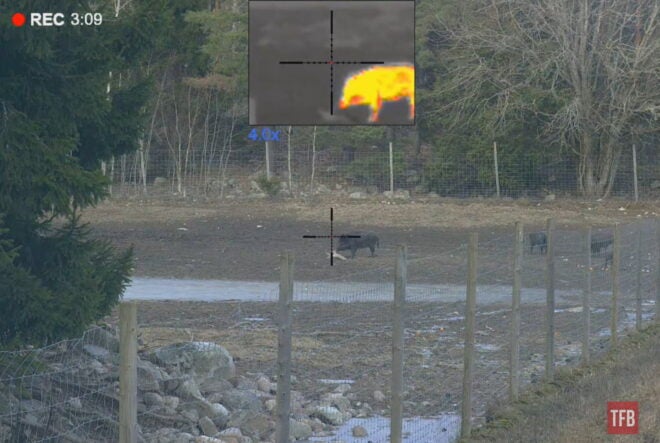
Note that the channels weren’t zeroed at the time, so the reticles point in different places. Only using the DUO as a camera here. Negative temperature, and not much sunlight.
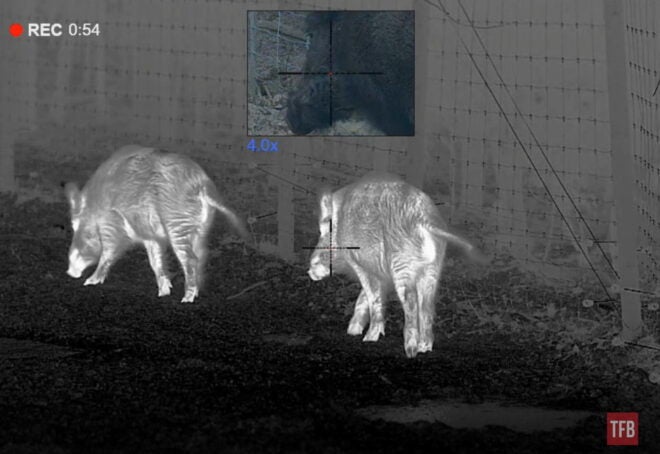
In this review, I’ll show you what the Pulsar DUO looks like, how it works and what kind of images and image quality it can produce.
Pulsar has a wide range of digital riflescopes, and for beginners, it might be difficult to understand from the start. We’ll try to explain, to give both beginners and experts a short overview. There are three main families of riflescopes from Pulsar: Thermion, Talion and Digex.
Thermion is the flagship thermal model, is mounted with 30 mm rings, and some models come with LRF (Laser Range Finder) and Ballistic Apps and Software. Talion is the budget/mid-range thermal riflescope, is more compact as it does not use the larger 50 mm lenses. The Digex is a digital riflescope with Color Night Vision for 24/7 use.
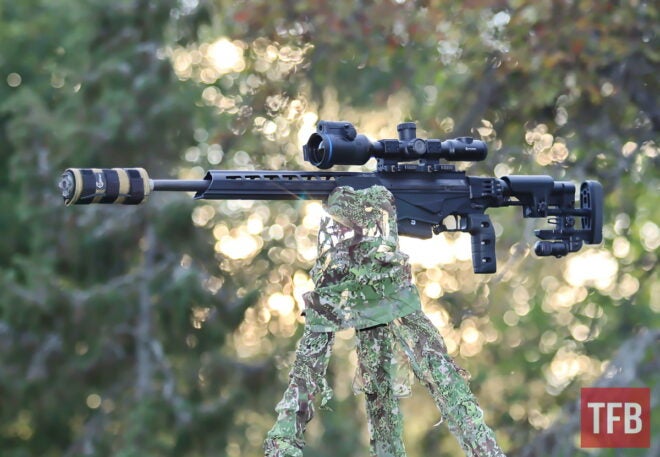
As the sun sets, you switch from the 4K day camera to the high-end thermal.
There is also a Thermion DUO DXP50 with multispectral functionality, and that’s the review you’re reading here. Multispectral in this case means you can use the riflescope to look at the image produced by the 4K day camera or the thermal imaging or use these channels for Picture in Picture (PiP), and watch both channels at the same time in the ocular (or on your iPad/iPhone, etc.)
Technical Specifications
Since the Thermion DUO DXP50 has a 4K CMOS 3840×2160 camera, it would have been easy for Pulsar to throw in just about any thermal sensor and still make customers go “wow!”. But they didn’t settle with that, and built-in a high-end thermal sensor made by Lynred in France. The DUO runs the high-end 640×480 @ 17 µm, 50 Hz frame rate thermal. The NETD is <25 mK (the lower the better), which is one of the best 640x sensors on the market. I have a lot of side-by-side experience with a lot of various devices, but not those available in the US so I cannot compare. My experience is that the worse the conditions get (think rain, frost and fog) the more it beats other Pulsars (cannibalism!) and competitors in terms of image quality.
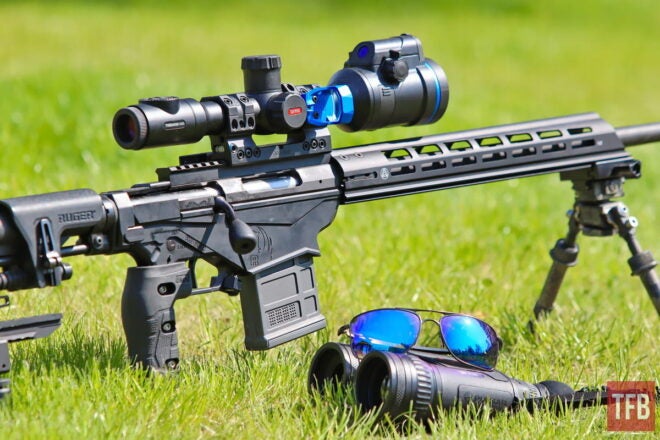
It’s common for thermals to run a NETD value around 40-50, but beware that some manufacturers “forget” to specify theirs, or call it proprietary information. If you look at a thermal with a low NETD, you will see more details in the target (good for target identification, backstop, etc.). A low-NETD device is more sensitive, but beware as there are some tricks to artificially manipulate this figure. It’s also possible to specify whatever value, as it’s difficult to measure for the end customer. It’s not like you take a ruler out and verify the length of something. As always, try to compare yourself and don’t take my word for it.
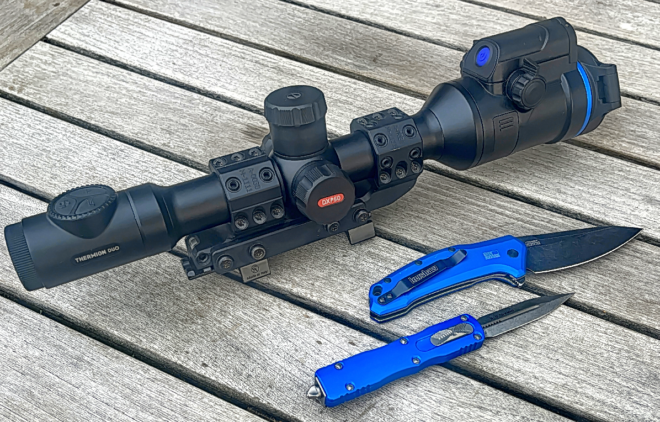
The weight is 0.96 kg, including batteries.
The display (in the ocular) is an AMOLED with 1024х768 pixels. As usual, video recording, Wi-Fi, Stream Vision 2 mobile app compatibility is included.
Zeroing – You need to zero twice
You need to zero both channels on the Pulsar Thermion DUO DXP50 scope. This is also why in some of the images and videos the reticles may differ (not zeroed). Since the digital daytime camera/channel sits on top of the thermal lens/channel, their optical axes are going to be different.
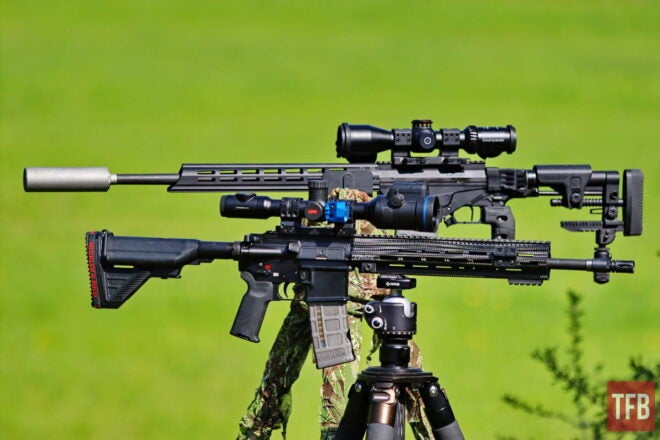
Because of this fact, you need to zero the optics/channels separately. The good news is that the process is pretty straightforward. If in doubt, please read the manual, get the dealer to zero everything, or watch a YouTube video with instructions. All others – just follow the instructions in the ocular.
Pulsar User Mode – Use it to its full potential!
The user mode feature allows you to modify your image settings, allowing you to use the same customized image every time you turn on your riflescope. You can access, enable and customize this function from the main menu. Then, after you’re satisfied with the brightness and contrast settings, you’re done! Your custom settings will be saved and will be available to you at any time. I haven’t really seen any competitor with this kind of feature, it’s quite useful.
Below: The Thermion DUO DXP50 centered, with a blue anodized Shield RMSx Red Dot, surrounded by Pulsar Merger thermal binoculars (review here). I thought it was cool to use a custom Shield sight in the same color as the Pulsar blue, and I think the pictures came out well. Do you need a red dot for this riflescope? Not really, but in some parts of the world it is illegal to use a digital riflescope for some game and the red dot may come in handy.
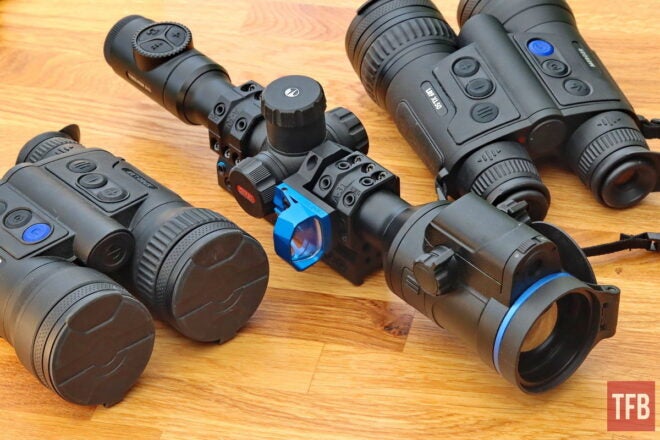
Below: The Thermion 2 models have an internal battery as well as an interchangeable, rechargeable one. Changing the external batteries is very easy, even in darkness. You can use an external power supply via USB-C as well. Spuhr QD mount, and Shield red dot.
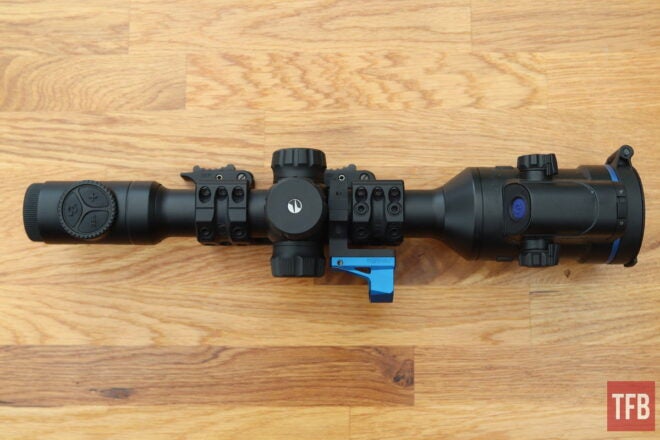
All The Money In One Picture? Safran Vectronix PLRF25 Laser Range Finder, Pulsar DUO (420 mm length) and a Schmidt & Bender 5-20×50 Ultra Short PM II for size comparison (299 mm length).
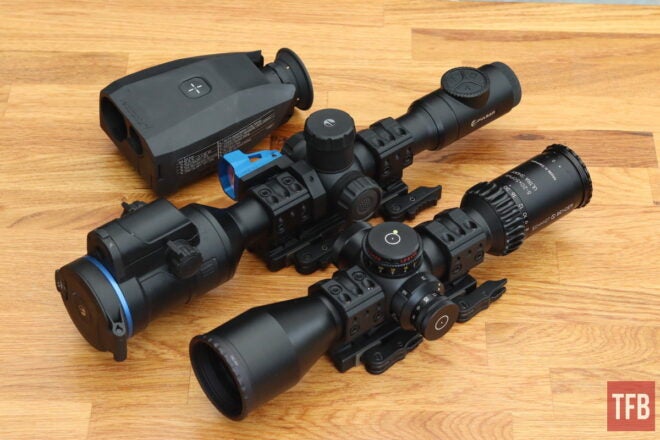
The Heckler & Koch MR223 with the DUO.
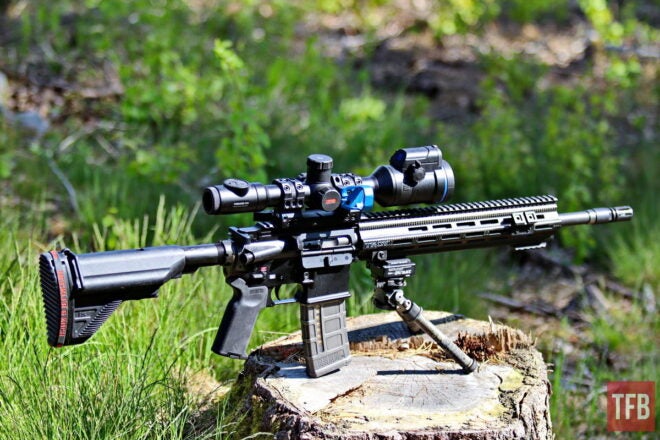
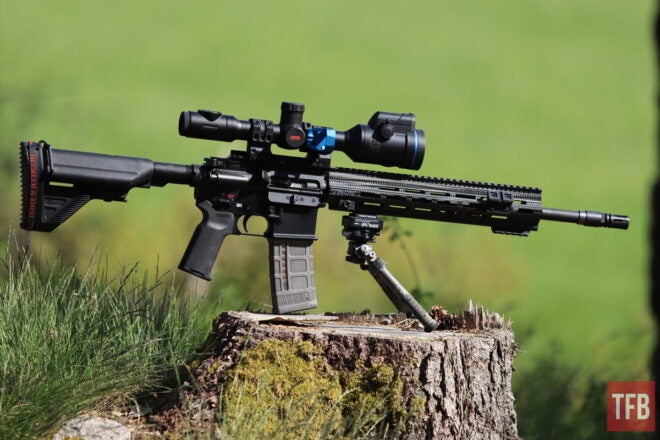
Suppressed Ruger Precision Rifle with the Schmidt & Bender 5-20×50 Ultra Short PMII vs. the “digital” H&K. Which one would you pick?
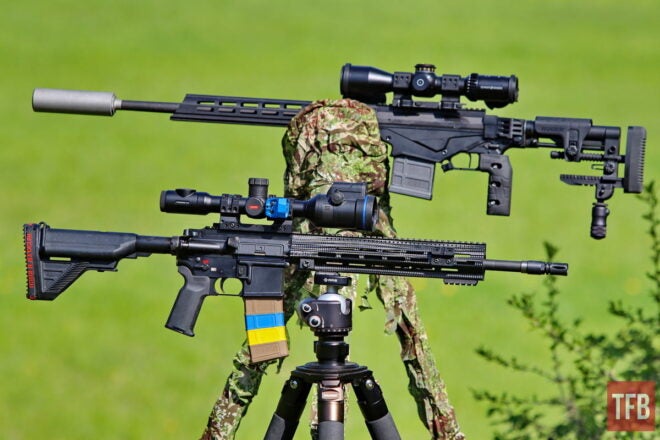
Ruger Precision Rifle with Pulsar DUO. A pretty good setup for most types of hunting.
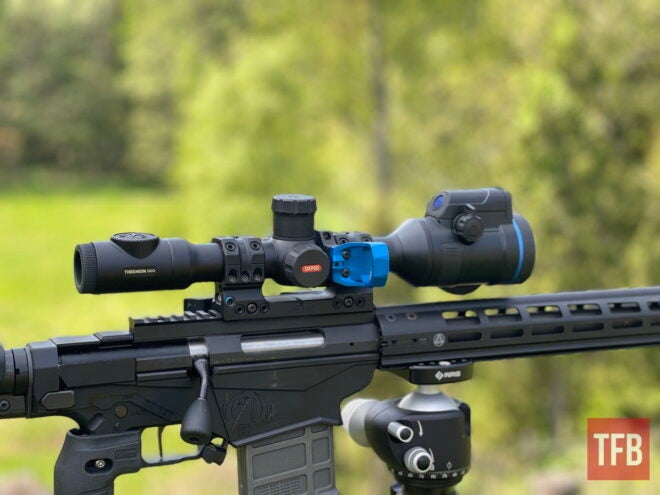
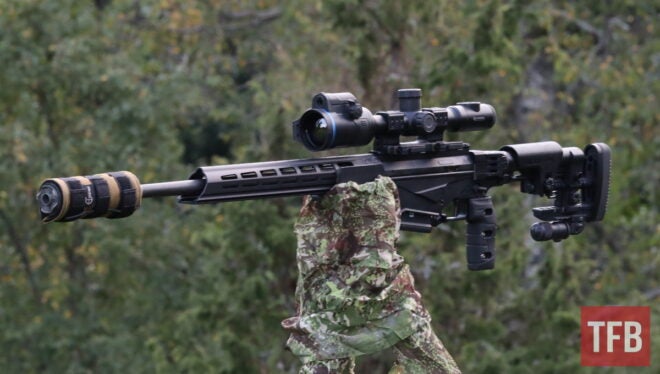
Sample Images
Seeing is believing. Here are some of the selected images over time.
This is some 300+ meters away, and I don’t know what it is between the branches. But it is small, and it can be detected. I think the white dot on the main thermal channel is a rabbit.
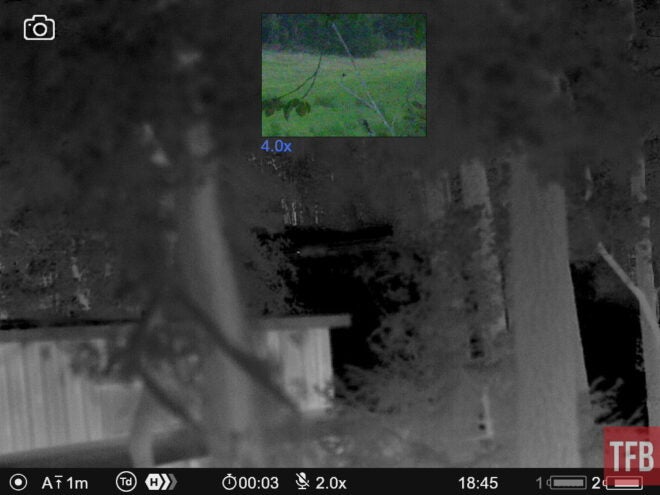
A moose on the loose. Distance around 40-45 meters (estimated).
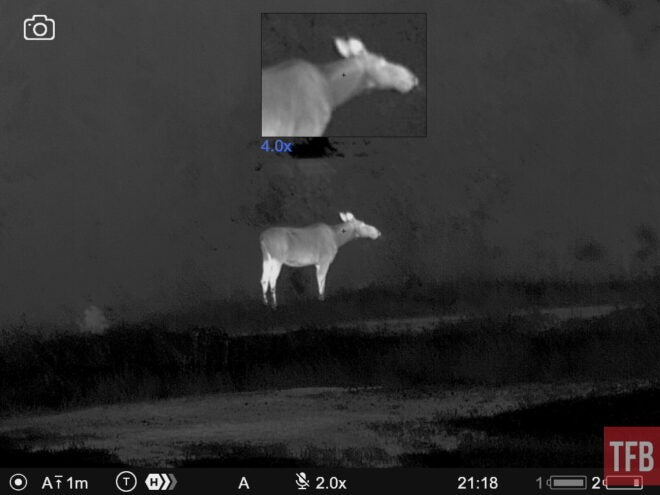
Thermal with thermal PiP.
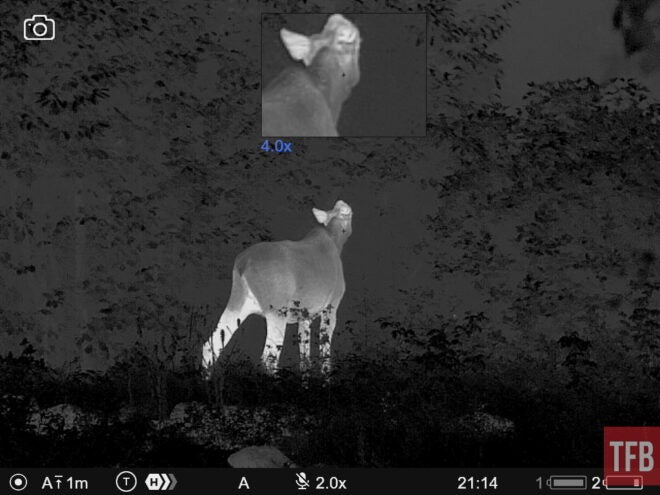
Here it’s too dark for the 4K camera to show anything.
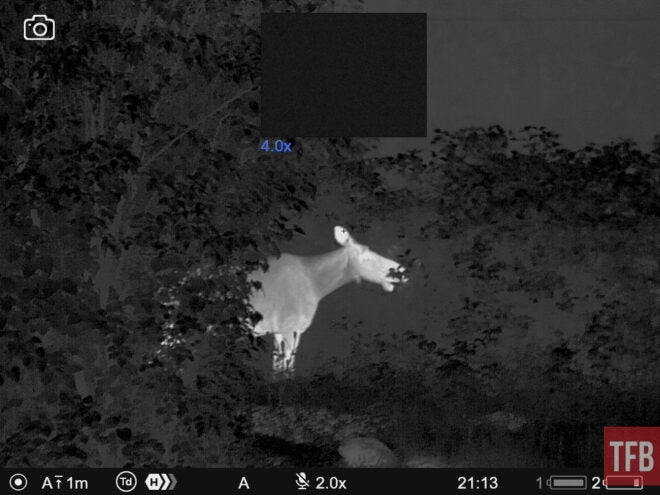
Trying the DUO in the rain. This mainly affects the thermal image to the worse. A lot of water in the way of something trying to sense the difference in heat is never good.
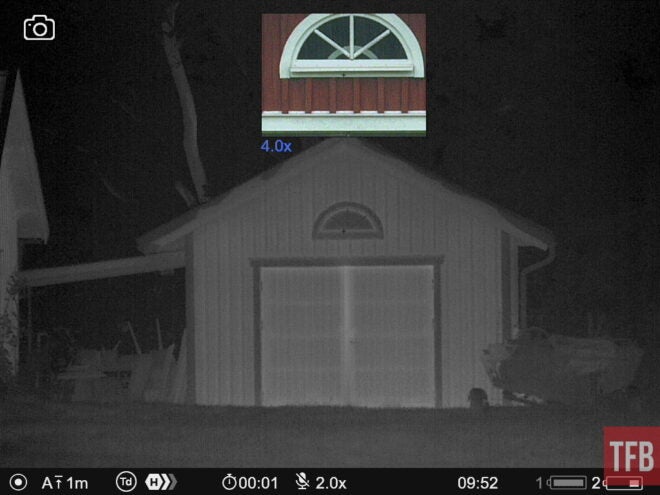
Look at the PiP with all the rain.
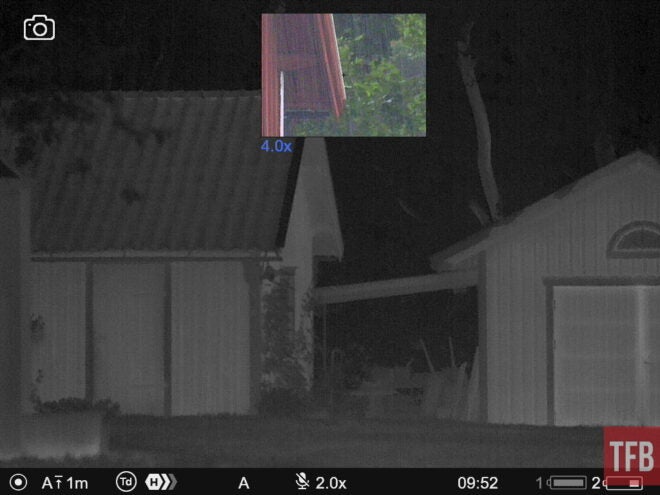
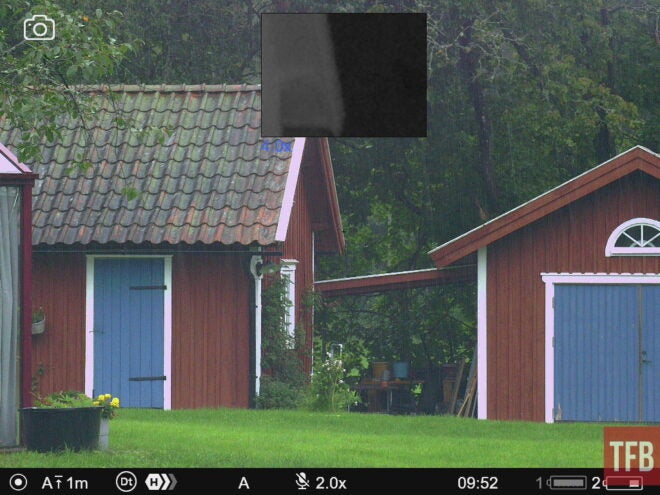
Sunshine makes everyone happy, including the thermal. Details start to show. Most of the 4K images in this review are taken during a lot worse conditions as well, but the 4K can deliver.
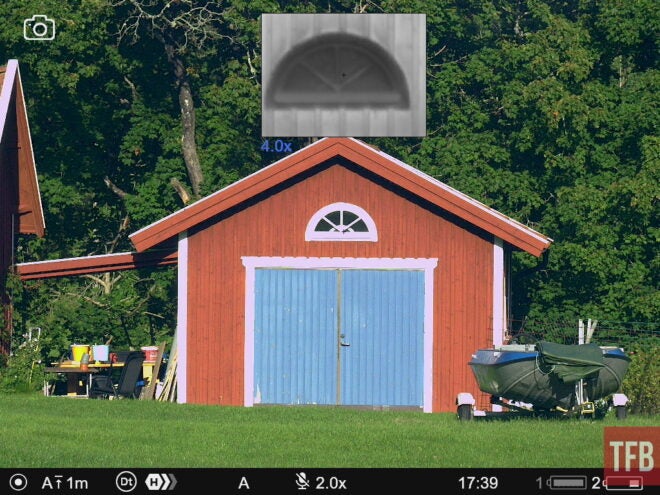
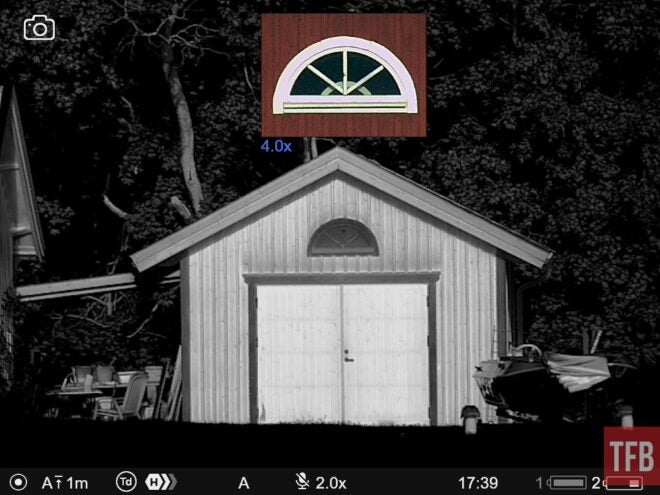
Looking at leaves.
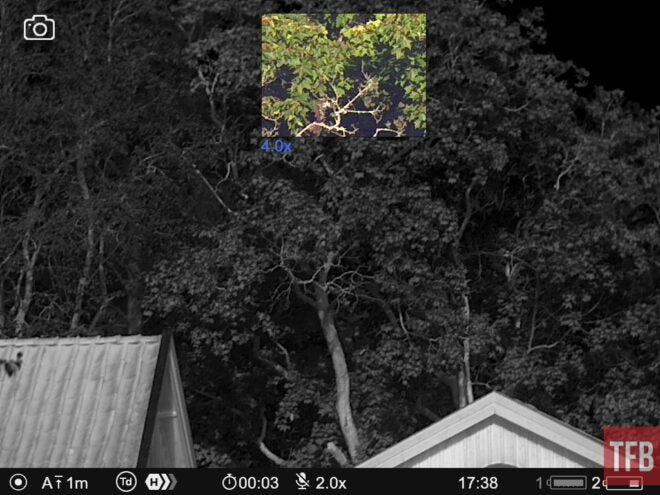
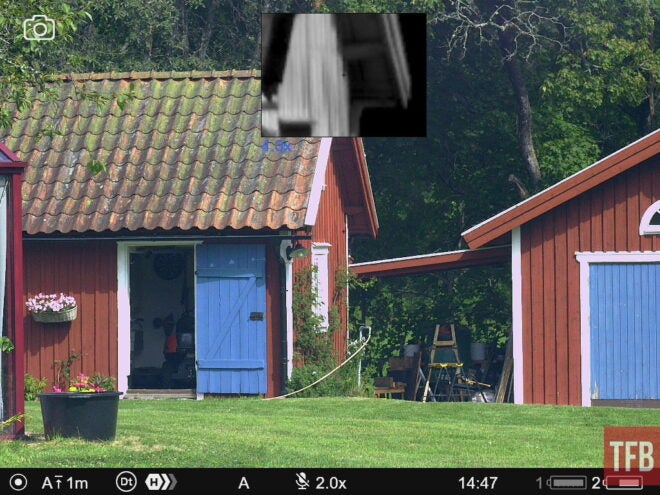
Sunshine – this is a great thermal image quality, among the best in the market.
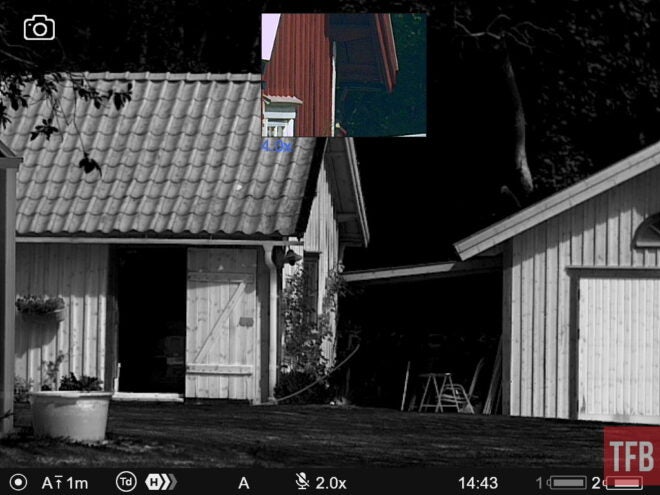
When can a thermal be of use? Would you spot the wild boar if you only used a normal optic? There’s a hunting dog in a blue protective dress just outside the thermal channel to the right. (Channels not zeroed here)
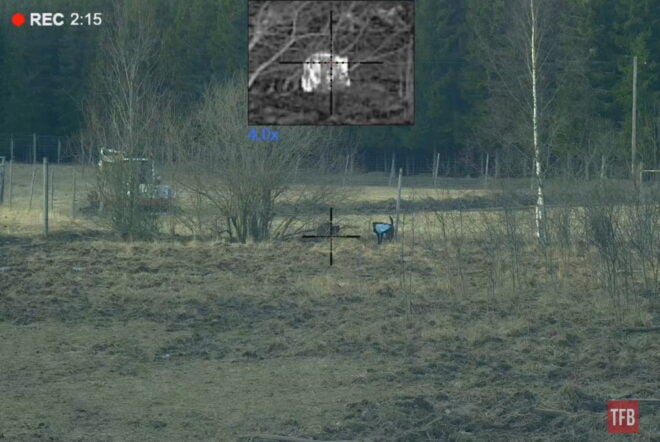
Winter time, with low light, and some noise is added to the 4K image as you increase the magnification.
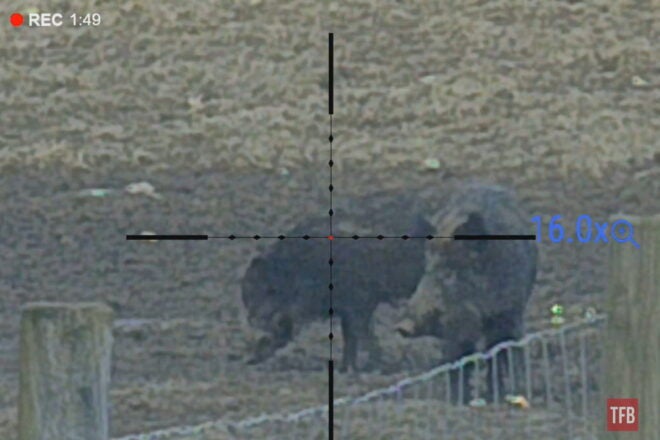
Below: Wild boar at the feeder, as dusk sets. The kids are lined up for eating. This image quality is sweet!
The 4K camera firmware is very clever, and does it automatically for you. As the daylight disappears, it leaves the color mode and starts using a grey scale instead (see PiP). This function offers you a while longer with its image until it blacks out. The 4K camera does NOT have any night vision, just the thermal.
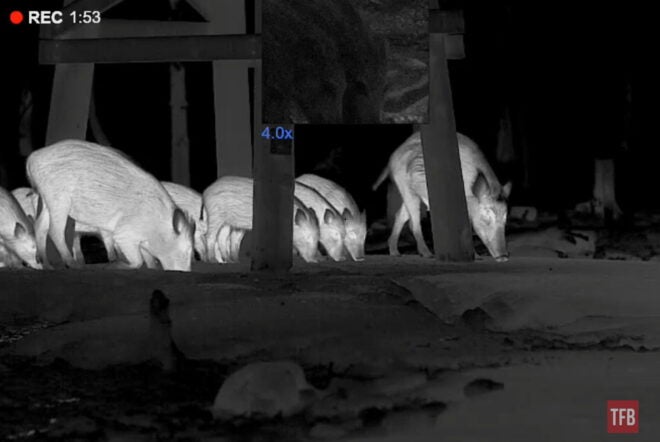
Did you say piglets? With the low NETD high sensitivity thermal you can clearly see which one is the sow. In some countries it is illegal to shoot the sow, when she’s got piglets.
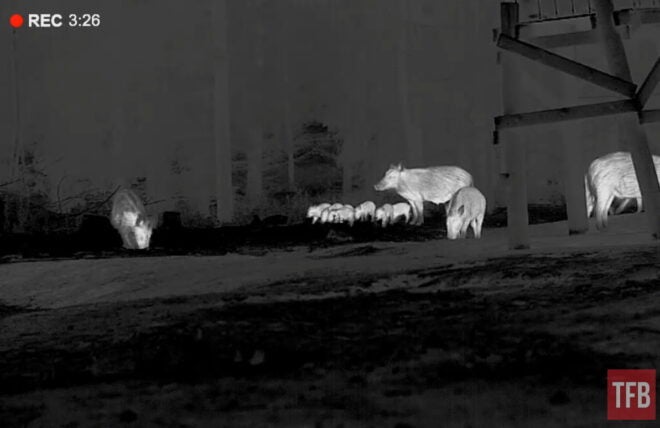
The forest comes alive. I used a minimized reticle for these images, to enhance the details in the image.
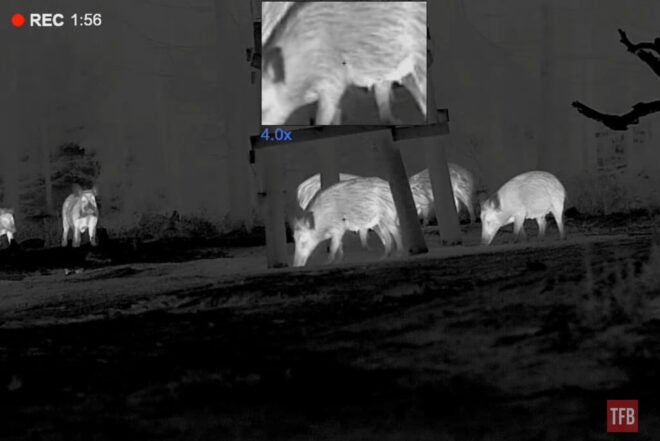
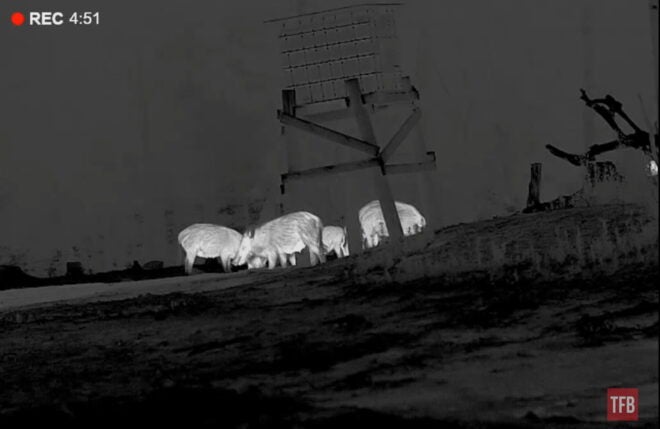
All of a sudden these appeared from nowhere. I first thought they were rats.
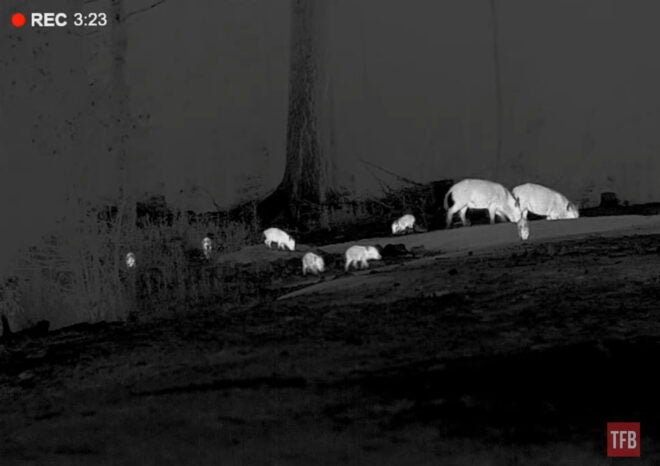
On-screen menu.
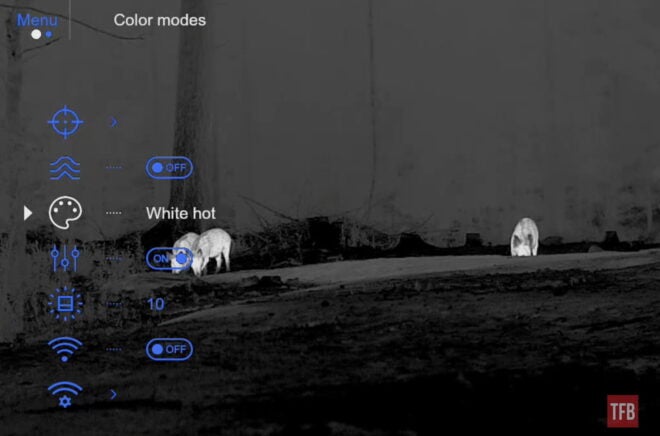
Channels compared
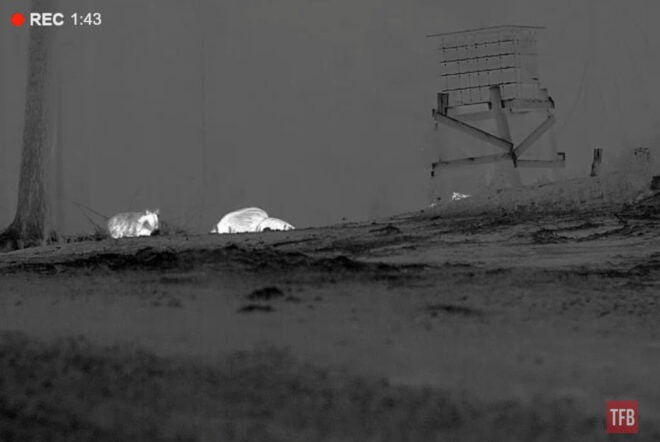
The sun is starting to go down, and the 4K day camera is starting to have issues.
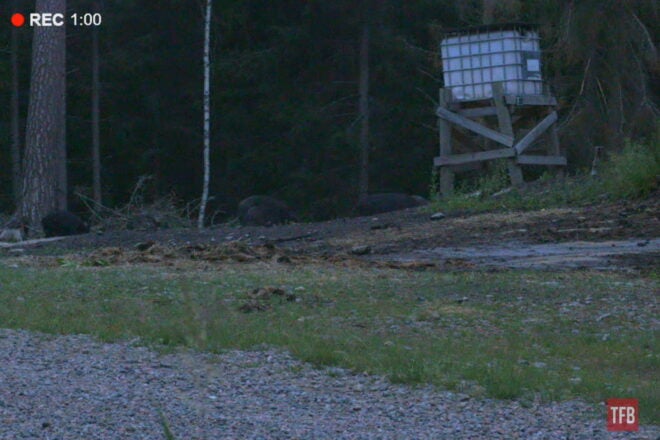
Lots of fallow deer at about 150+ meters (not sure). To be honest, the image appeared a lot better in the ocular than in this image.
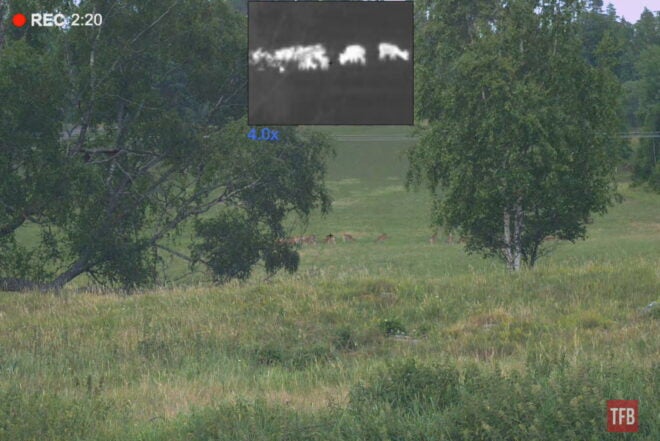
Decisions…decisions…Fallow deer at 150 or cows at 650 meters? With the DUO it is at least possible to make an educated guess where to aim.
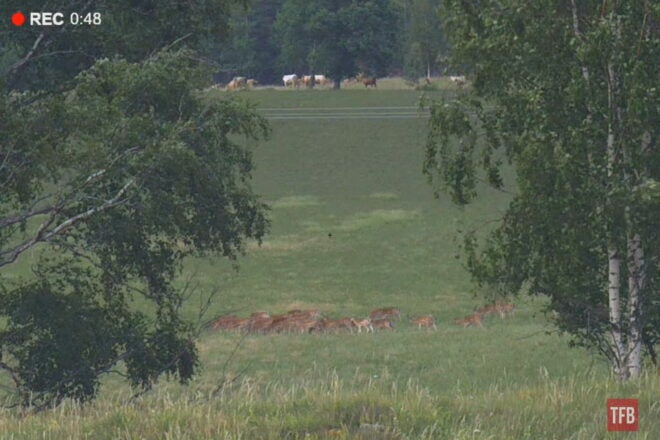
Comparing channels again.
Two wild boar kissing.
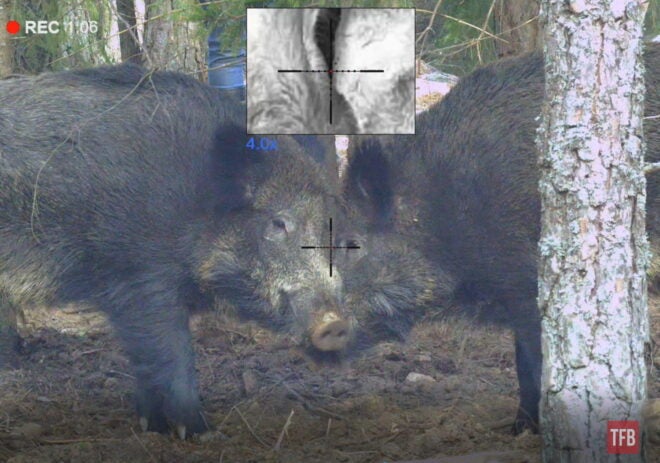
What does it look like on thermal?
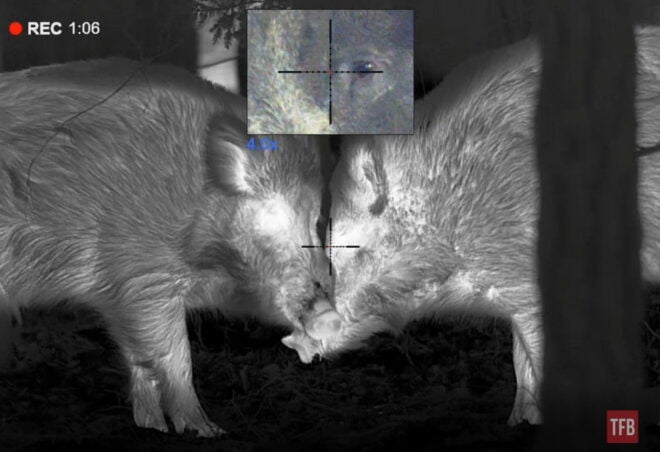
Wild boar, with a hunting dog a few steps behind. Please forgive the dog, it was a puppy in training.
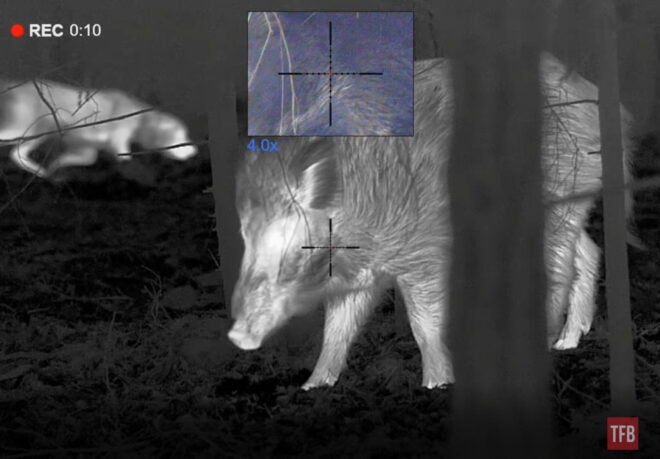
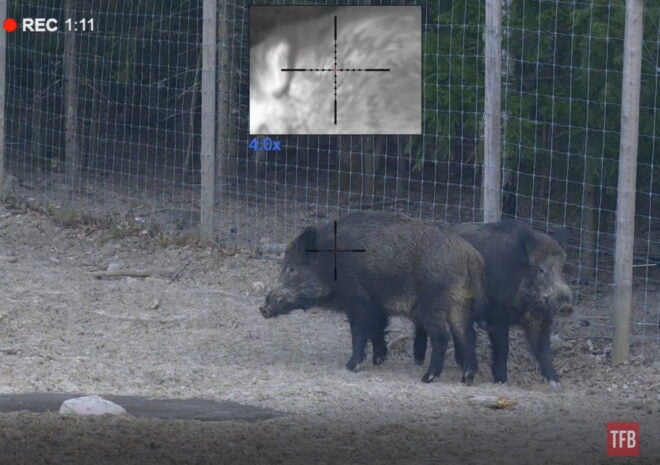
Inverting the channels, another example with a wild boar relatively close.
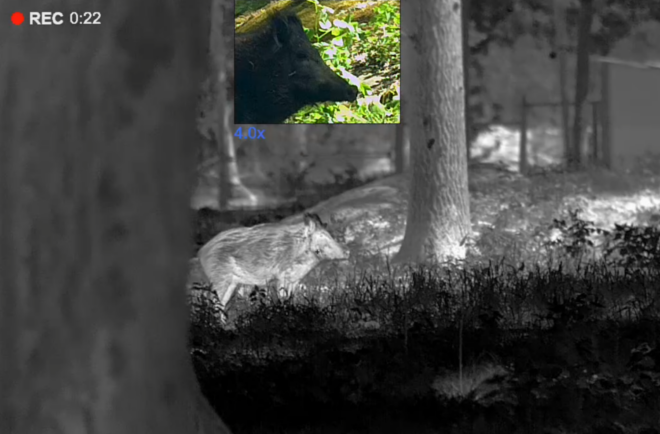
The thermal looks like it is a little out of focus, but this is a wild animal and the split-second situation didn’t allow perfection in the focus adjustment. The 4K camera is non-adjustable.
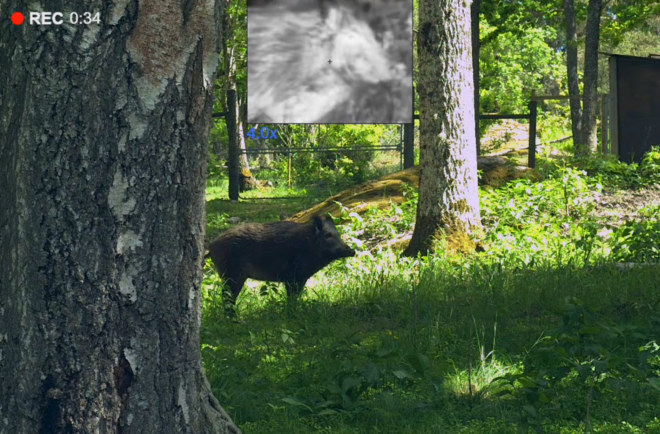
I took some snapshots from an indoor shooting competition, where a cinema screen is used to display targets and thermal cameras (on the roof) call the shots. From the DUO, you can kind of see what the system does. As the rounds hit the cinema screen heat is created (see PiP), and the computer can call the shots. I think these two shots were mikes.
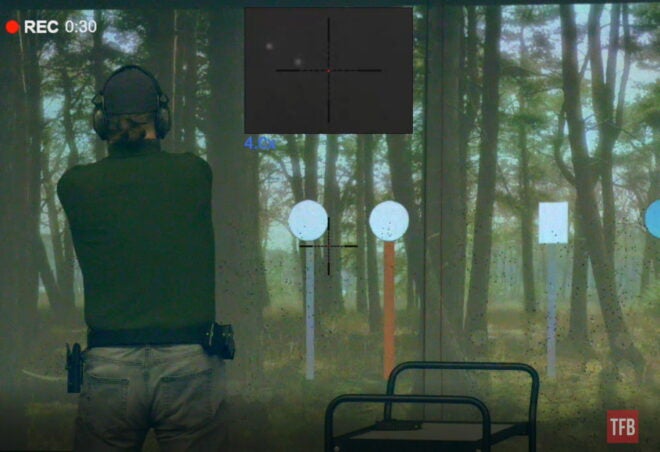
I think this is a SIG Sauer MPX in action. The thermal still catches the spent brass.
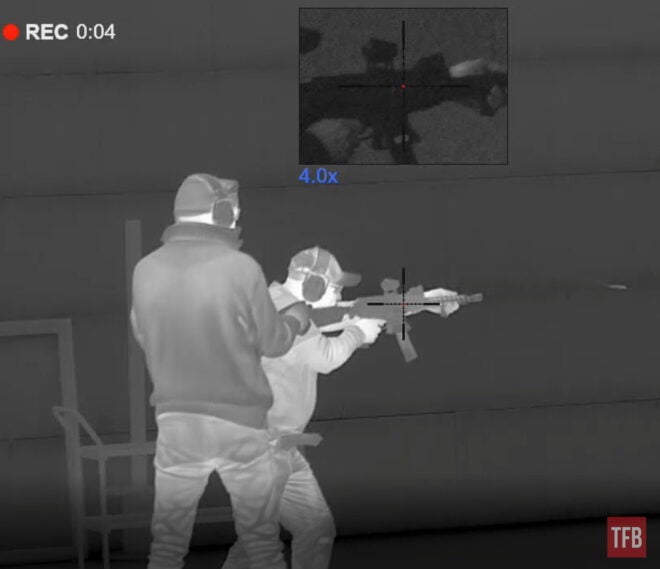
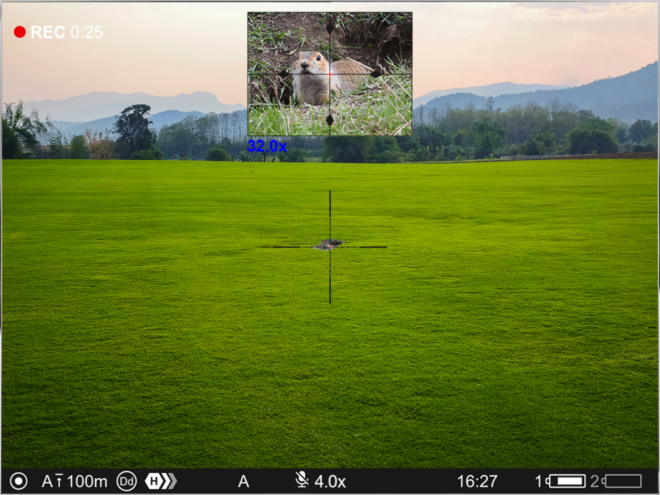
“Being the top-level thermal unit, the Thermion Duo DXP55 comes with an increased base magnification of the daytime channel. The 4K digital sensor allows operation in a full 4-32x magnification range without losing image quality. This model is an ideal choice for small-game hunting and precise long-range shooting at daytime.” (Pulsar)
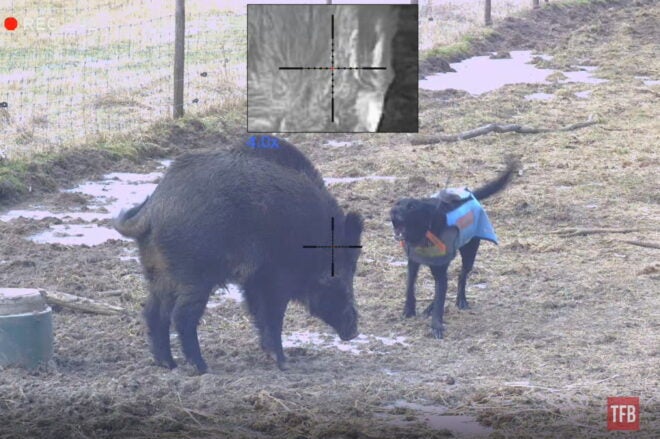
…and action!
Here’s a roe deer family moving over a field.
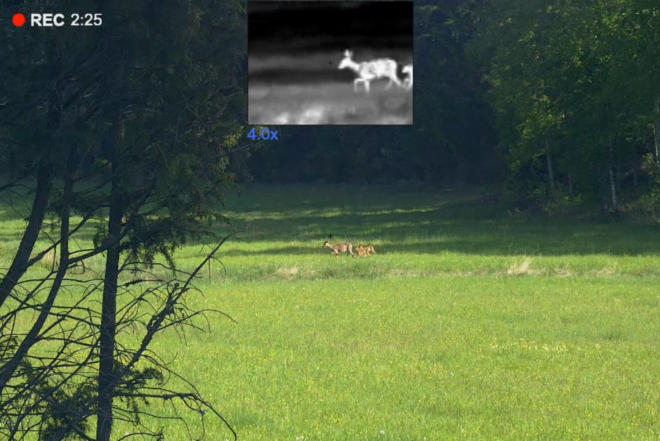
Running for cover.
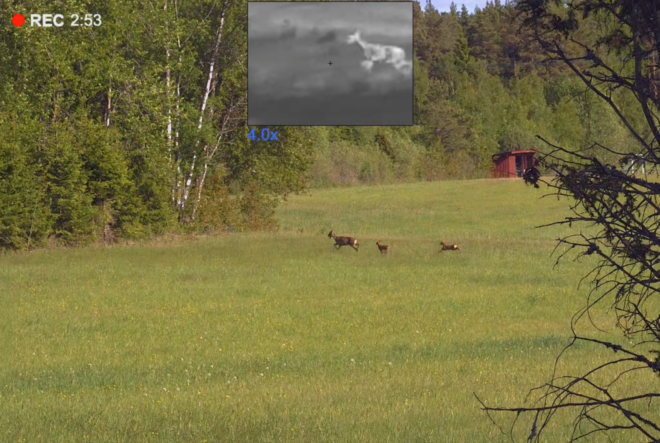
More wild boar. Too close for comfort really, I think this is below 10 meters and all you can see is the snout.
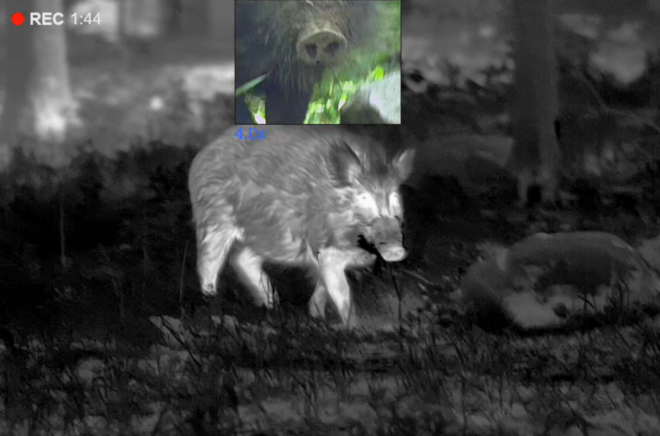
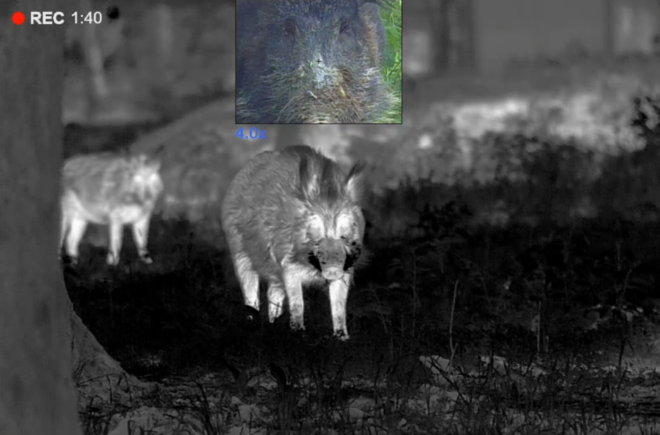
Images like this should give you a better idea of how thermals work. Note how the stones in the shadow are cold, and the grass in the sunshine is more visible. You can see both the animals (taking some kind of mudbath) and the forest behind.
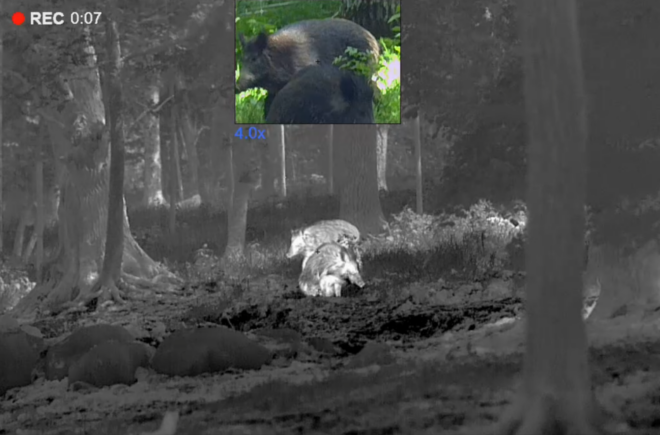
Some caged animals in a wildlife park. Moose first.
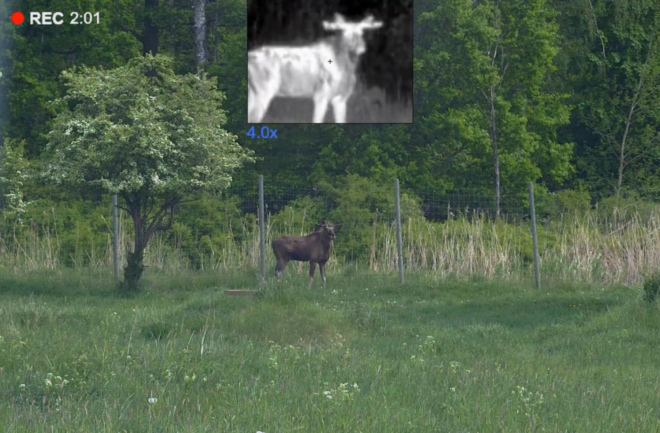
Red deer and fallow deer (to the best of my knowledge).
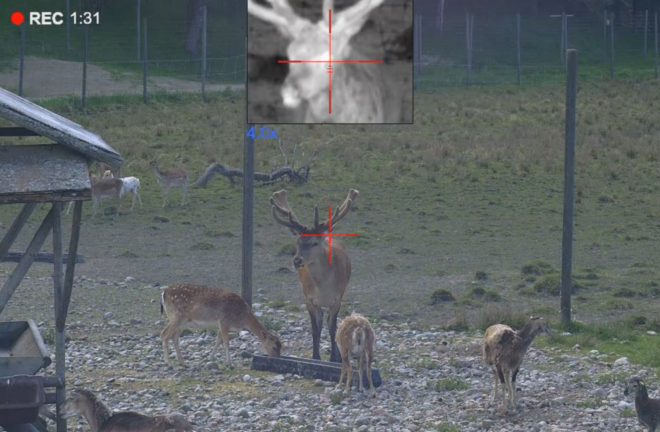
A wild moose calf on a field.
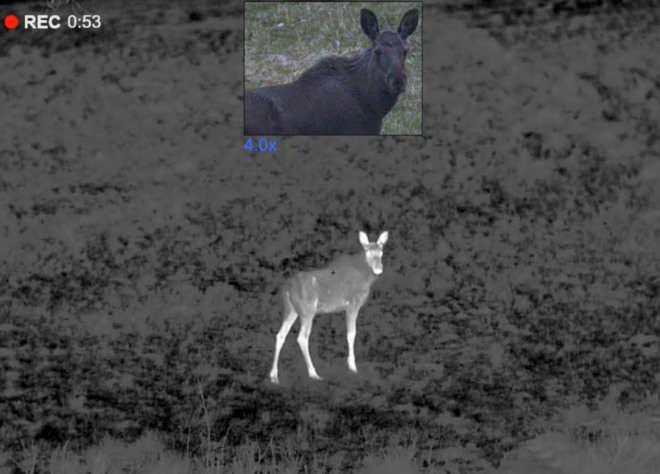
The Thermion DUO DXP50 thermal can be used to capture all sorts of movement in the night.
As well as animals (moufflon sheep) far away.
Here’s a video using the Thermion DUO DXP50.
Price & Availability
Dealers are free to set their own prices (within limits I’m sure). The prices in the US market seem to be in the region of $5,800 and in the EU around €5,000. It’s available and on the shelves.
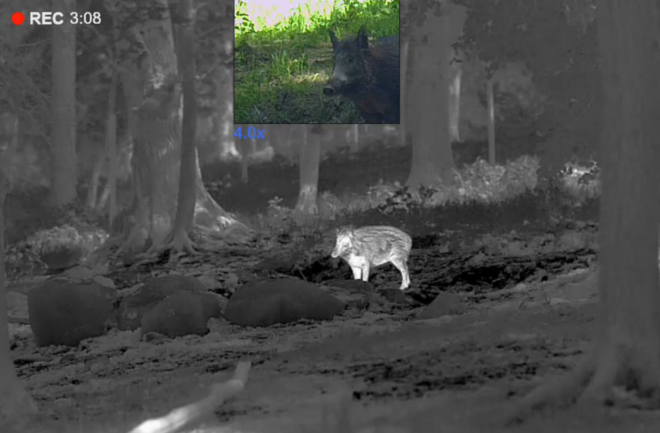
Conclusion
The Pulsar Thermion DUO DXP50 is Pulsar’s first take on a multispectral riflescope, and there’s always a danger in being an early adopter of new technology. However, all of these technologies are already mature and proven, and Pulsar really knows their stuff with thermal and digital riflescopes. Pulsar didn’t go for the cheap components or any obvious shortcuts in the design of the DUO.
So, will the DUO with its 4K camera replace other normal optics? No, not yet. However, it is good enough for almost anything, but I wouldn’t run it at the next Precision Rifle Series competition (although I’m very tempted). Will there be a time when digital outperforms normal glass? I’m not going to eat my words and say no to that, but we’re not there yet. What’s next? 6K? 8K? 16K?

Note: If you don’t need a 4K daytime channel, there’s no need to get the DUO. Get the Thermion 2 XP50 Pro or XL50 (or cheaper alternatives), and take benefit of the Laser Range Finder and Ballistic App instead. For a dedicated American hog or coyote hunter, the LRF would be way more useful than the 4K channel.
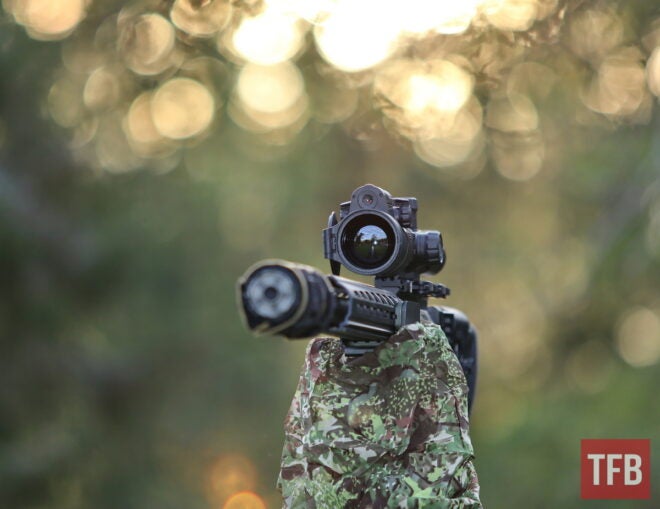
I had no issues with my Pulsar Thermion DUO DXP50 riflescope, none whatsoever, over a period ranging from February to November 2023. Mine saw snow, sunshine, rain and a lot of normal use. I have not heard or read of others having any issues either. The Thermions are very stable riflescopes, and occasional firmware updates usually add functionality and increase image quality over time (free of charge), rather than bug fixes. Use them with confidence.
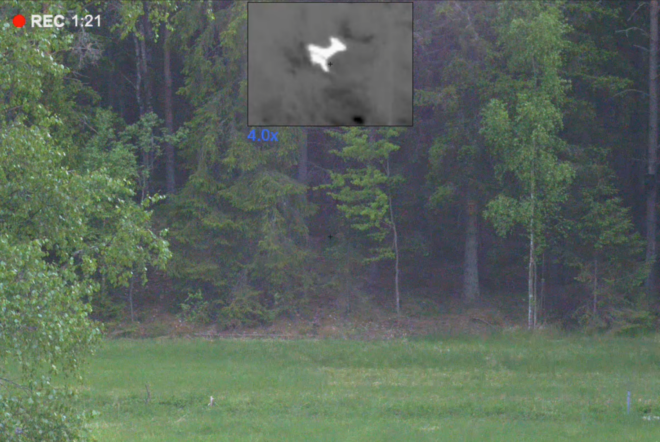
With a normal day optic or the DUO’s 4K daytime channel, it wasn’t possible to spot this roe deer walking in the forest. But you cannot hide from the thermal.
Pros
- As you can see from the images, Multispectral riflescopes are the coolest.
- There’s no apparent latency in the thermal or the 4K channel. Moving targets better beware!
- The thermal image quality is second to none, with a 4K day channel added.
- A lot of features, but still easy to use.
- First-generation technology that actually works – Don’t be afraid to use it.
- Other models may suit your hunting style better – but Pulsar have options.
Cons
- There’s no Laser Range Finder, and therefore no ballistics app, as there’s a 4K camera instead.
- The scroll wheel on the Pulsar Talion is better.
- Needs power to function.
- All this tech comes at a price.
Here is a direct link to the Thermion Duo DXP product page.
We are committed to finding, researching, and recommending the best products. We earn commissions from purchases you make using the retail links in our product reviews. Learn more about how this works.
 Your Privacy Choices
Your Privacy Choices
